“. . . from these honored dead we take increased devotion to that cause for which they gave the last full measure of devotion . . .”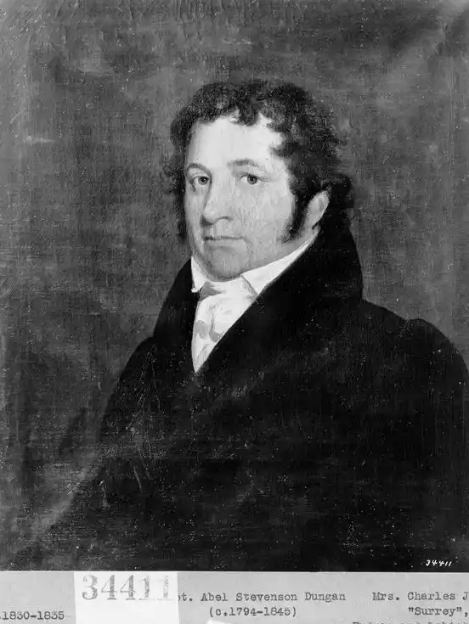
President Abraham Lincoln, Gettysburg Address, November 1863
Thomas Morris Dungan was born in Baltimore to a seafaring family Sept. 30, 1826. His father, Able, was a merchant captain and was buried at sea when Dungan was just 19. His older sister Mary Jane married into a family of ship-owners that operated clippers in the Chesapeake Bay area. His younger brother William earned a commission in the U.S. Navy and would rise to the rank of commodore. Each of Dungan’s immediate family members lived out their lives in Maryland. With this background, it was no wonder that 34-year-old Dungan’s found himself a junior lieutenant in the United States Revenue Marine, one of the Coast Guard’s predecessor service.
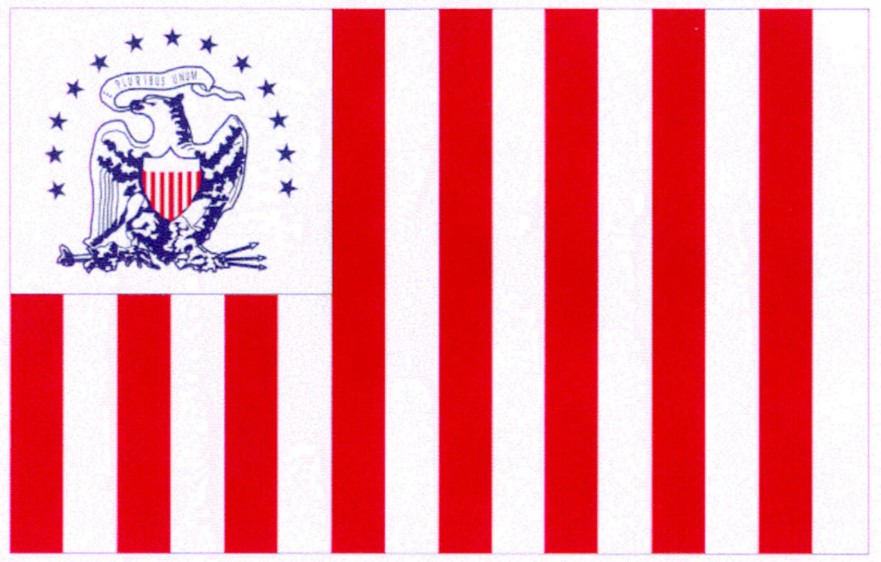 At the start of the American Civil War, Maryland was a critical state for both Northern and Southern strategists due to the close proximity of both capitals. Maryland became a battlefield and, in 1862, it would host the bloodiest day in American military history at Antietam. Maryland was also divided politically. Though a slave state, Maryland’s delegates at its Secessionist Convention would vote 53 to 13 against leaving the Union. Following Lincoln’s call for volunteers to suppress the rebellion in the South, Baltimoreans clashed with Federal troops attempting to reinforce the Union Army in Washington resulting in the death of soldiers and civilians, and imposition of martial law for the remainder of the war. Political clashes such as these forced every Marylander to choose sides often dividing neighbors, friends, and family.
At the start of the American Civil War, Maryland was a critical state for both Northern and Southern strategists due to the close proximity of both capitals. Maryland became a battlefield and, in 1862, it would host the bloodiest day in American military history at Antietam. Maryland was also divided politically. Though a slave state, Maryland’s delegates at its Secessionist Convention would vote 53 to 13 against leaving the Union. Following Lincoln’s call for volunteers to suppress the rebellion in the South, Baltimoreans clashed with Federal troops attempting to reinforce the Union Army in Washington resulting in the death of soldiers and civilians, and imposition of martial law for the remainder of the war. Political clashes such as these forced every Marylander to choose sides often dividing neighbors, friends, and family.
In 1860, on the eve of the Civil War, he served aboard Revenue Cutter Harriet Lane. Undoubtedly, Dungan knew he would make war against some of his fellow Marylanders. Had he served in the Confederacy, Dungan would have joined the many members of the Revenue Marine who chose to defect to the South and turn their cutters over to local authorities.
The North imposed a blockade of Southern ports aimed at constricting the Southern economy into submission. With few factories or manufacturing, the pre-war economy of the South was based on exporting cash crops such as cotton and tobacco, while importing manufactured goods from abroad. The Union Navy was faced with the daunting task of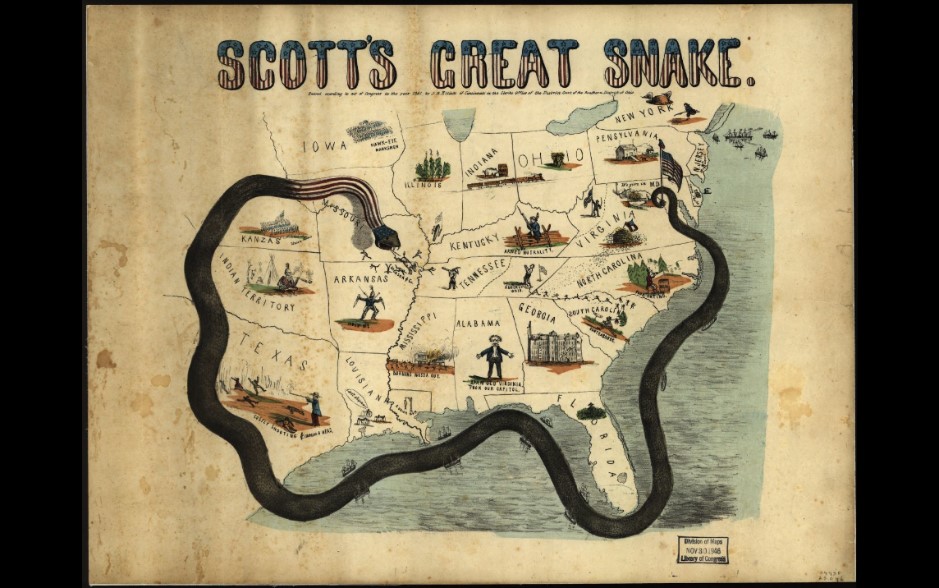 closing shipping to over 3,000 miles of Southern coastline and over 150 seaports. Part of the solution lay with mobilizing the Treasury Department’s Revenue Marine, a fleet of 57 cutters responsible for enforcing customs at ports of entry.
closing shipping to over 3,000 miles of Southern coastline and over 150 seaports. Part of the solution lay with mobilizing the Treasury Department’s Revenue Marine, a fleet of 57 cutters responsible for enforcing customs at ports of entry.
The revenue cutters wer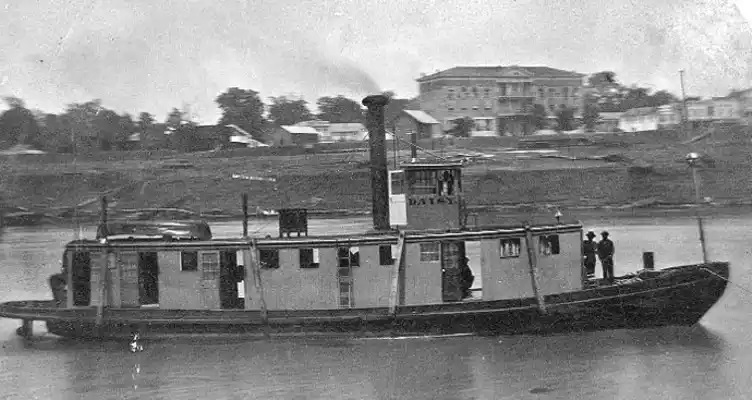 e tasked with shutting down shipping and interdicting blockade runners. The actions taken by the officers and men of the Revenue Marine were critical to the Northern war effort, stemming the flow of illicit traffic and hampering the Confederate war machine. Moreover, the scale of military operations forced the Union to look to the U.S. Revenue Marine, as well as the Union Navy, for its maritime war effort and, in the process, the revamping of the Revenue Marine with state of the art technology.
e tasked with shutting down shipping and interdicting blockade runners. The actions taken by the officers and men of the Revenue Marine were critical to the Northern war effort, stemming the flow of illicit traffic and hampering the Confederate war machine. Moreover, the scale of military operations forced the Union to look to the U.S. Revenue Marine, as well as the Union Navy, for its maritime war effort and, in the process, the revamping of the Revenue Marine with state of the art technology.
During the war, maritime technology underwent a revolution. Dungan had commanded two different cutters commissioned in Baltimore: Hercules and Reliance. These sisterships were steam powered—an anomaly in the service. In 1860, the year before the steam tugs were purchased, only one out of 24 Revenue Marine cutters were equipped with engines of any sort. Following their acquisition, the tugs were armed with a 12-pound rifled gun, 12 muskets, 12 pistols, 12 boarding pikes, and 12 cutlasses. The fact the Revenue Marine was acquiring deep draft tugs, likely intended for peacetime commercial use, and equipping them with a cannon, highlights how unprepared the Union Navy and Revenue Marine were to enforce a blockade and wage war in the shallows.
Since the beginning of the conflic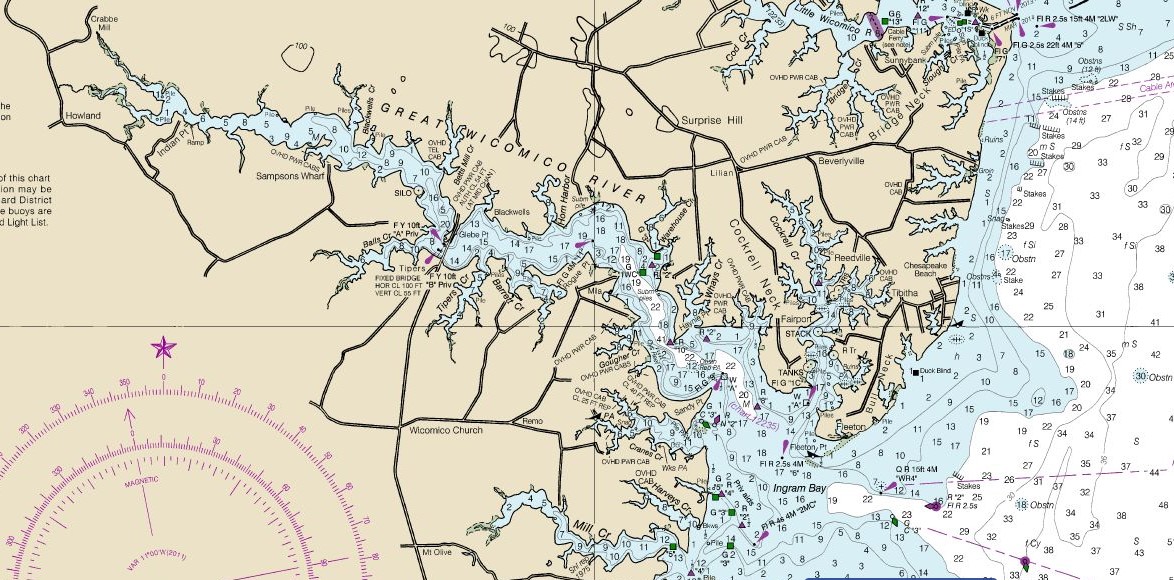 t, Virginia and the Chesapeake Bay region had become a battleground. Dungan, now a captain, found himself at war in his own backyard. The revenue cutters Reliance and Hercules, along with their sister ship Tiger cooperated with the Navy to stop rebel shipping and confront the Confederate presence on the coast. By August 1864, much of the South’s regular army was fighting Union troops to the west in the siege of Richmond and Petersburg, Va. In Virginia’s surrounding countryside, including the tidewaters of the Chesapeake, Union control was loose and engagements with Confederate partisans were co
t, Virginia and the Chesapeake Bay region had become a battleground. Dungan, now a captain, found himself at war in his own backyard. The revenue cutters Reliance and Hercules, along with their sister ship Tiger cooperated with the Navy to stop rebel shipping and confront the Confederate presence on the coast. By August 1864, much of the South’s regular army was fighting Union troops to the west in the siege of Richmond and Petersburg, Va. In Virginia’s surrounding countryside, including the tidewaters of the Chesapeake, Union control was loose and engagements with Confederate partisans were co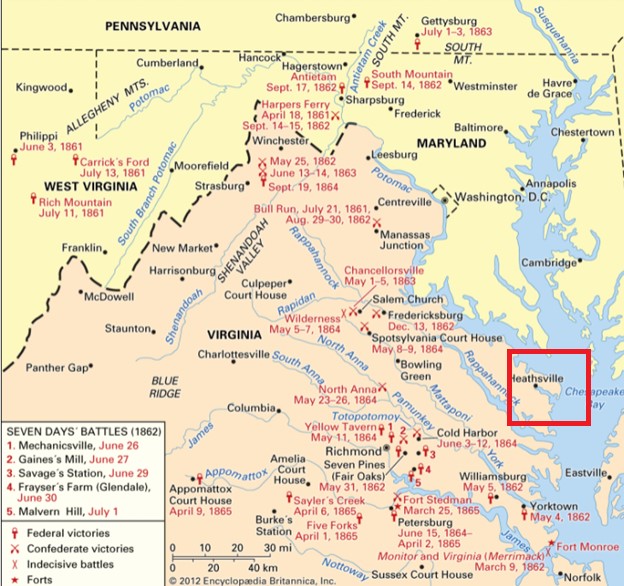 mmon.
mmon.
One such encounter was widely noted in local newspapers and the New York Times. In early August 1864, Dungan and Reliance were under way in the Great Wicomico River. A tributary of the Chesapeake, the Wicomico connected the Eastern Virginia town of Heathsville with the Bay. The cutter was en route to assist a “Mr. Appleby” in moving his children from the contested area to a safer location. Dropping anchor in Tibbots Creek, one of the Wicomico’s tributaries, Dungan sent a crew ashore to locate the Appleby children. Unable to find them, the small boat returned. Meanwhile, a group of hostile townsfolk began congregating near a fleet of canoes on the riverbank. After it became evident that the mob could use the canoes against his cutter, the captain dispatched a second small boat to seize the vessels. As the last canoe was taken, irregulars fired on the boat and captured the crew. Coxswain George Ayers, along with ordinary seamen Sam Lewis, Peter Cooper, Eli Cantley, and David Smithers were captured. In response, the Reliance opened fire on the rebels with its deck gun and small arms.
In the face of a continua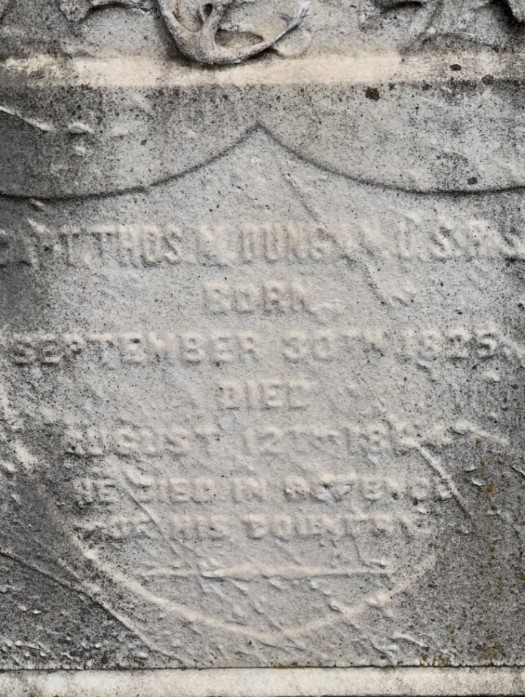 lly strengthening enemy force, the cuttermen fought their vessel for over 90 minutes. As resistance stiffened, Dungan ordered Reliance to weigh anchor and make way for open water. It was at this point that a bullet hit Dungan in the chest and entered his lung. He died an hour later. Meanwhile, Reliance’s gunner Thomas Roberts, commanding the deck gun, took a severing wound to the arm. With its captain critically wounded and chief gunner out of action, Reliance’s crew continued to lay small arms and artillery fire on the wooded bank before retiring.
lly strengthening enemy force, the cuttermen fought their vessel for over 90 minutes. As resistance stiffened, Dungan ordered Reliance to weigh anchor and make way for open water. It was at this point that a bullet hit Dungan in the chest and entered his lung. He died an hour later. Meanwhile, Reliance’s gunner Thomas Roberts, commanding the deck gun, took a severing wound to the arm. With its captain critically wounded and chief gunner out of action, Reliance’s crew continued to lay small arms and artillery fire on the wooded bank before retiring.
Baltimore had been Dungan’s home and the Chesapeake Bay his home waters. Dungan served the course of the war underway in the Chesapeake and both of his captaincies were cutters home-ported in Baltimore. Before his sudden death, it must have saddened him to see his birthplace become a battlefield. Befitting his family heritage, his body made the final voyage back to Baltimore. His obituary read:
The death of Captain Dungan has created deep regret among his many friends in this city. He was the youngest son of the late Capt. Abel S. Dungan, for many years an enterprising shipmaster out of this port. The deceased was raised a seaman, and has been connected with the revenue service some fifteen years. He was for some time an officer on board the Harriet Lane, has been in command of one of the revenue gunboats in the waters of the Chesapeake ever since the breaking out of the war, and by his energy, skill and unflinching bravery, has rendered very important service to the government. As a mark of respect to his memory, the flags of the shipping are to be half-masted until after his burial.
Captain Dungan proved a skilled blockader. Maryland records indicate no less than 30 vessels captured by Dungan and adjudicated in local courts. Dungan and his men seized rebel vessels of various kinds including sloops, schooners and canoes, and their cargoes. To put this into perspective, by the end of the war, the U.S. Navy fielded around 700 warships with 1,504 rebel vessels taken as prizes or destroyed. In other words, just over two prizes for every warship. This stands in contrast to Dungan’s record of 30 prizes while the captain of two different cutters!
Dungan was the only member of the U.S. Revenue Marine known who died in action in America’s bloodiest war, giving his “last full measure of devotion” to the cause. As we enter the 160th anniversary of the Civil War, historians and Coast Guard members alike will continue to honor the valor, sacrifice and skill with which cuttermen fought to save the Union.
| Vessels captures by U.S. Revenue Cutter Hercules under Capt. Thomas Dungan |
Vessels captured by U.S. Revenue Cutter Reliance under Capt. Thomas Dungan |
| Schooner Whig |
Sloop (unidentified) |
| Schooner Bride |
Sloop Sarah Lewis |
| Sloop Wren |
Canoe (unidentified) |
| Sloop Velma |
Sloop and Canoe (unidentified |
| Algonquin |
Schooner R. Mason |
| Schooner Velma and Cargo |
Prioness |
| |
Sleep Dixie |
| |
Canoe (unidentified) |
| |
Young America |
| |
Canoe (unidentified) |
| |
Canoe (unidentified) |
| |
Union |
| |
Greyhound |
| |
Schooner Lydia A. Hughlett |
| |
Schooner John U. Dennis |
| |
Canoe (unidentified) |
| |
Schooner Dispatch |
| |
Canoe (unidentified) |
| |
Schooner Alexander Shinn |
| |
Sloop Leading STar |
| |
Sloop Reindeer |
| |
Sloop Train A. Bounds |
| |
4 canoes and 3 yawl boats |
| |
Schooner War Hoop |